

If your stove flames flicker or your water heater struggles to warm up, the issue might be with your gas regulator.
Wait, what does a gas regulator do? In simple terms, it controls the flow of gas from the tank to your appliances. When it doesn’t work right, such problems can happen.
Many homeowners ignore this device until it causes problems, which can be dangerous or very expensive to fix. Calling in a gas heater installation professional early would’ve saved you from all the trouble.
That’s why it’s important to know how gas regulators work, how long they usually last, and the signs that show it’s time for maintenance. Keep reading!
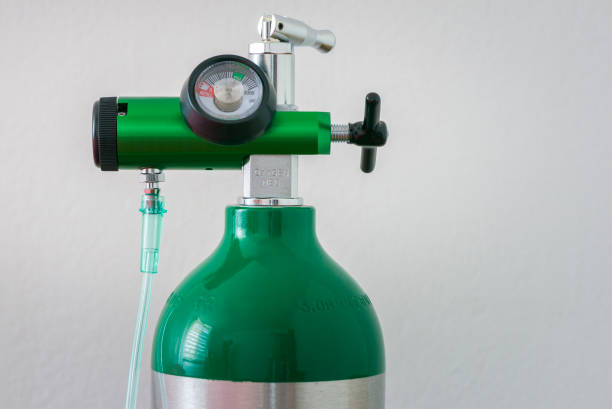
A gas regulator is a metal safety device placed between your home’s gas supply and your appliances. Its job is to control the pressure of the gas.
This device looks like a sturdy metal cylinder, often made of brass, aluminum, or steel. It has two connections: high-pressure gas enters on one side, and low-pressure gas exits on the other.
Why do we need to control gas pressure? If the pressure is too high, it can cause dangerous leaks or even explosions. If the pressure is too low, the appliance might not work well.
For example, in a gas stove, it acts as a pressure reduction device. It helps keep the flames steady and prevents them from flickering.
When the gas flow isn’t controlled correctly, the furnace’s ability to burn fuel can stop working. This can cause problems like the pilot light turning off or not enough heat being produced.
In short, the main function of a gas regulator is to lower high-pressure gas from the supply to a safe, controlled level that household appliances can use.
Most homes have a main gas regulator near the meter that controls the pressure for the entire house. Some appliances, like outdoor grills, have their own smaller regulators.
So, how does a gas regulator work? Let’s find out.
Gas from the street main or a storage cylinder enters the regulator at high pressure, usually between 7 and 60 psi. Propane cylinders can have even higher pressure, around 100 to 200 psi.
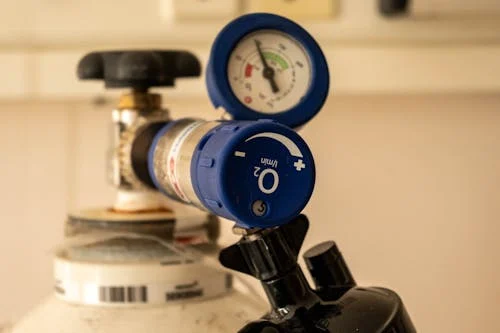
This pressure is too high for your home appliances to handle safely. Most residential appliances operate at low pressure, typically between 0.25 and 0.5 psi.
To ensure safety, a gas regulator is installed where the high-pressure gas line connects to your home’s internal piping.
When high-pressure gas enters the regulator, it meets a flexible diaphragm, which is a thin, rubber-like part that controls the pressure.
This diaphragm is inside the regulator and separates the gas chamber from the spring chamber.
As gas pressure pushes on it, the diaphragm flexes. When pressure goes up, it moves up against the spring; when pressure goes down, the spring pushes it back down.
On the other side of the diaphragm, a calibrated spring provides the counterforce. Factory-set, it applies just enough downward pressure to keep your home’s gas pressure safe.
The spring pushes down on the diaphragm, balancing the upward gas pressure. This allows the regulator to automatically control and stabilize the pressure going to your appliances.
When more gas is needed, the spring helps open the valve, allowing more flow. When less gas is needed, the spring keeps the valve from closing completely, helping to prevent overpressure.
The diaphragm is connected to a valve stem in the main gas flow. Its movement controls the valve’s opening.
When incoming gas pressure pushes it up, it lifts the stem and reduces flow. If the spring pushes it down, the valve opens more.
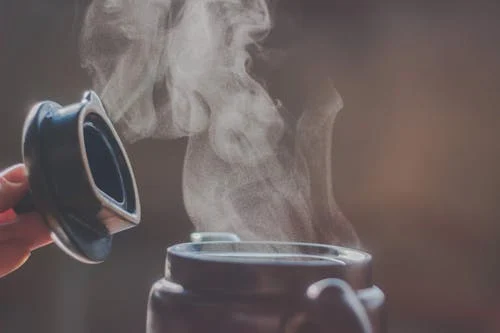
This sensitive system reacts quickly to pressure changes, adjusting gas flow within milliseconds.
As gas passes through the valve, pressure drops to a safe level, typically 6-8 inches of water column or 0.25-0.29 psi, though this varies by local codes.
The regulator continuously balances incoming pressure, spring force, and diaphragm movement to maintain a steady outlet pressure.
This automatic control ensures appliances get the right pressure, no matter their gas demand.
The final step is delivering regulated gas to your appliances. This controlled gas flows through your pipes to power your stove, furnace, water heater, dryer, and other appliances.
Once the gas reaches your appliances and the flame is steady and blue, it indicates the regulator is working properly. That’s how a propane regulator works.
Also Read: How Long Does a Gas Stove Last?
Did you know there are different types of gas regulators used in a gas heating system?
This gas regulator is installed where the line enters your property. It controls the gas pressure coming into your home. The gas company owns and maintains it, so don’t try to fix or modify it.
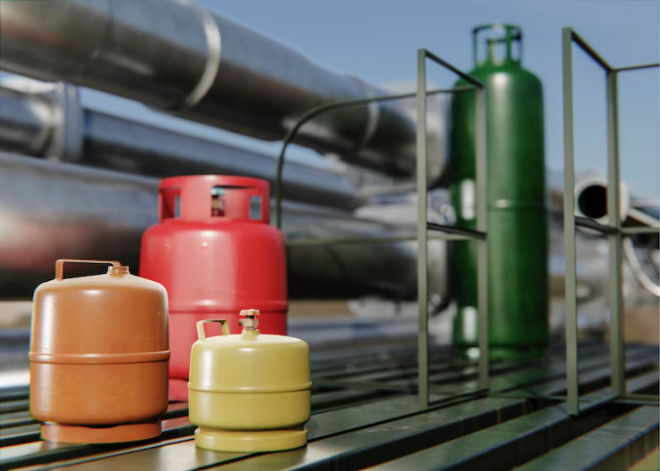
Built to withstand weather, it has safety features that shut off the gas if pressure gets too high. But it needs regular maintenance to keep it working properly.
This type of gas regulator is installed on your home’s gas pipes. You usually find it in basements or utility rooms.
It ensures all parts of your home receive the correct amount of gas, regardless of how many appliances are using it. So, line regulators help your appliances operate properly.
Homeowners should keep the area around the line regulators clear so maintenance workers can access them easily.
An appliance regulator is a device you’ll find either inside or right next to your gas appliances, such as your furnace, water heater, or stove.
Think of it as the last control before the gas reaches the burner. Most new appliances have these regulators built in, but older models might have them as separate parts.
It’s important not to adjust these regulators yourself. If they’re set incorrectly, it can cause the appliance to burn gas inefficiently or even damage the appliance.
A single-stage regulator is the most common residential gas pressure reducer. It acts like a nozzle, reducing high-pressure gas to the lower pressure needed for appliances in one step.
Popular and affordable for home use, these regulators can experience slight pressure fluctuations with changes in flow or incoming pressure.
While usually enough for home use, you may notice minor performance variations in appliances during high gas usage.
Also called two-stage regulators, these advanced systems reduce gas pressure in two steps for better accuracy and stability.
First, they lower the high inlet pressure to an intermediate level, then fine-tune it to the desired outlet pressure.
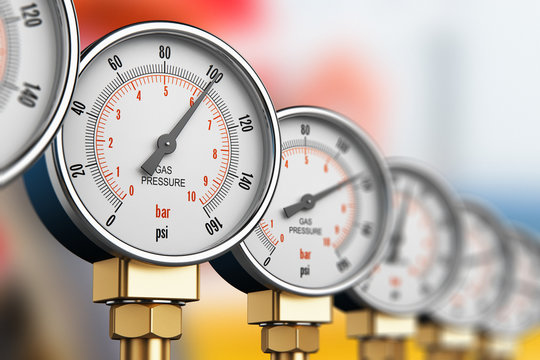
This design maintains steady pressure despite inlet or demand changes, making it ideal for consistent pressure needs.
These regulators make appliances work better and last longer, but they come with higher initial costs and more components that may need maintenance.
A low-pressure regulator is designed to keep the gas pressure safe for typical home appliances. This pressure usually ranges between 0.25 and 0.5 psi, which most household equipment requires.
These regulators are used throughout home gas systems, from the main meter to appliances. They maintain steady pressure, ensuring appliances like dryers are safe to operate.
A high-pressure regulator is designed to handle and reduce very high inlet pressures. It is typically used with propane tanks and cylinders that store gas at 100-200 psi or higher.
These regulators are installed at propane tanks, cylinders, or wherever high-pressure gas connects to your home’s distribution system.
They lower the extremely high storage pressures to safer levels. From there, the pressure can be reduced further by downstream regulators or used directly by high-pressure appliances.
Also Read: 5 Gas Stove Maintenance and Safety Tips
Gas regulators are designed to be durable, but they don’t last forever. So, how long do propane regulators typically last?
Most residential propane regulators last between 10 and 15 years. But some gas plumbing experts recommend replacing them every 5 years, especially in extreme environments.

While high-performance regulators can last up to 20 or 25 years, these are uncommon in homes.
So, what factors influence the lifespan of a regulator? Weather exposure, frequency of use, maintenance, and the quality and type of the regulator all play a role.
You know what a gas regulator does and how long it lasts. But do you know how to tell if there’s a problem with it and when you should call a gas plumbing expert?
Now you know what a gas regulator does. You’ve also learned about different types of gas regulators, how to spot warning signs of issues, and how long propane regulators usually last.
The main point? You need to understand your gas system well. It helps you identify when maintenance is needed, so you can avoid those expensive repairs and dangers.
And if you need help inspecting or replacing your gas regulator, feel free to contact us at Melbourne Gas Plumbing.


Fill the form below and we’ll get back ASAP!

MGP! Thank you for help, honest pricing and high quality work. Thank you to Joe for pricing and the boys involved for replacing my hot water tank and fixing my gas leak for a reasonable price. 5 star response, 5 star service and 5 star price.
Joe was great. Very professional and quick. Gas hot water heater needed replacing, he was honest and upfront about what our options were. System was sourced and replaced within a couple of hours.
Fantastic service very responsive Joe is highly recommended and works very clean and neat..... good job well done....very happy... will use again and again

At Melbourne Gas Plumber, we're here to handle all your gas plumbing needs throughout Melbourne. With over 40 years of experience, we bring extensive local knowledge and expertise to every job.
QUICK LINKS
OPENING HOURS
Open 24/7
